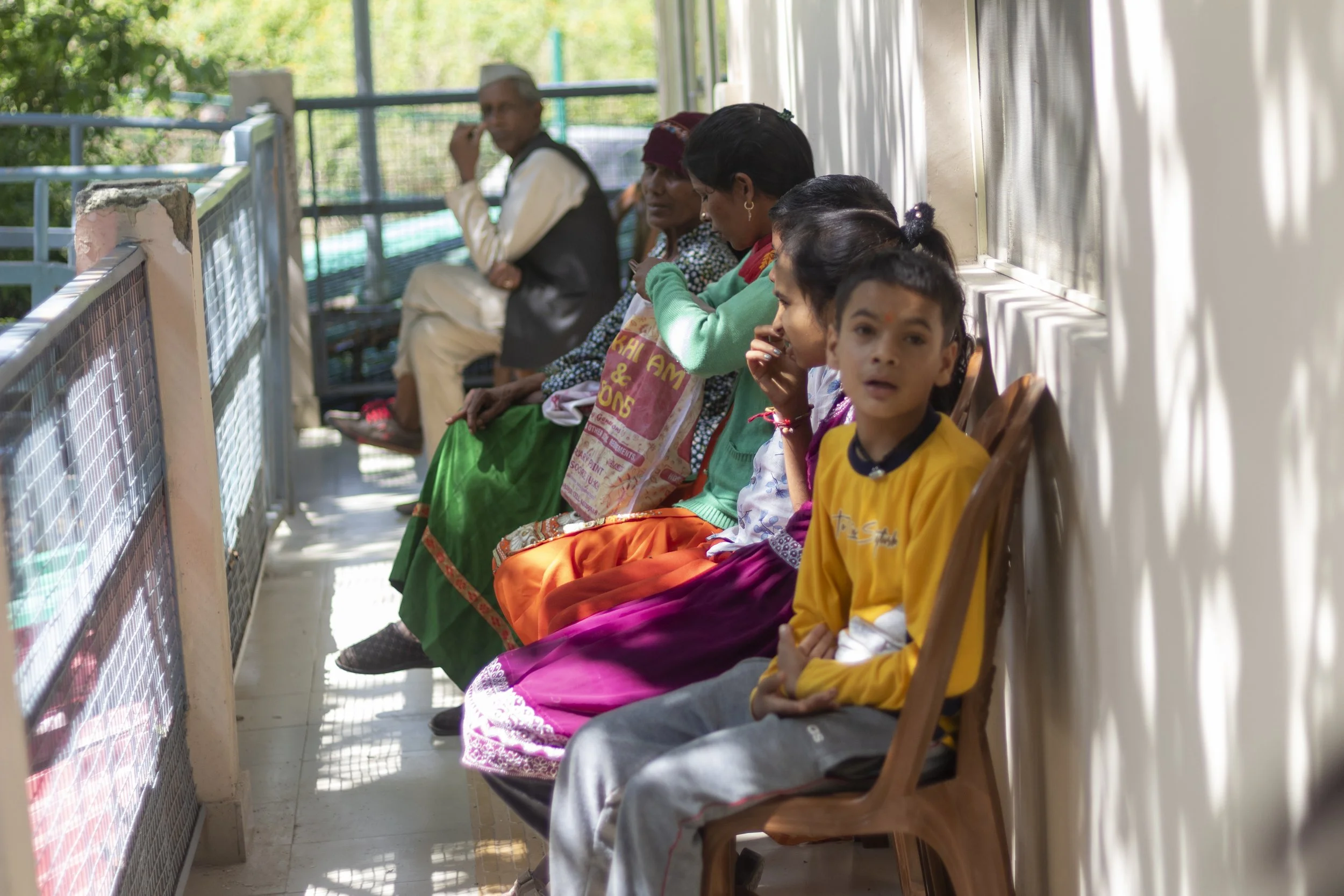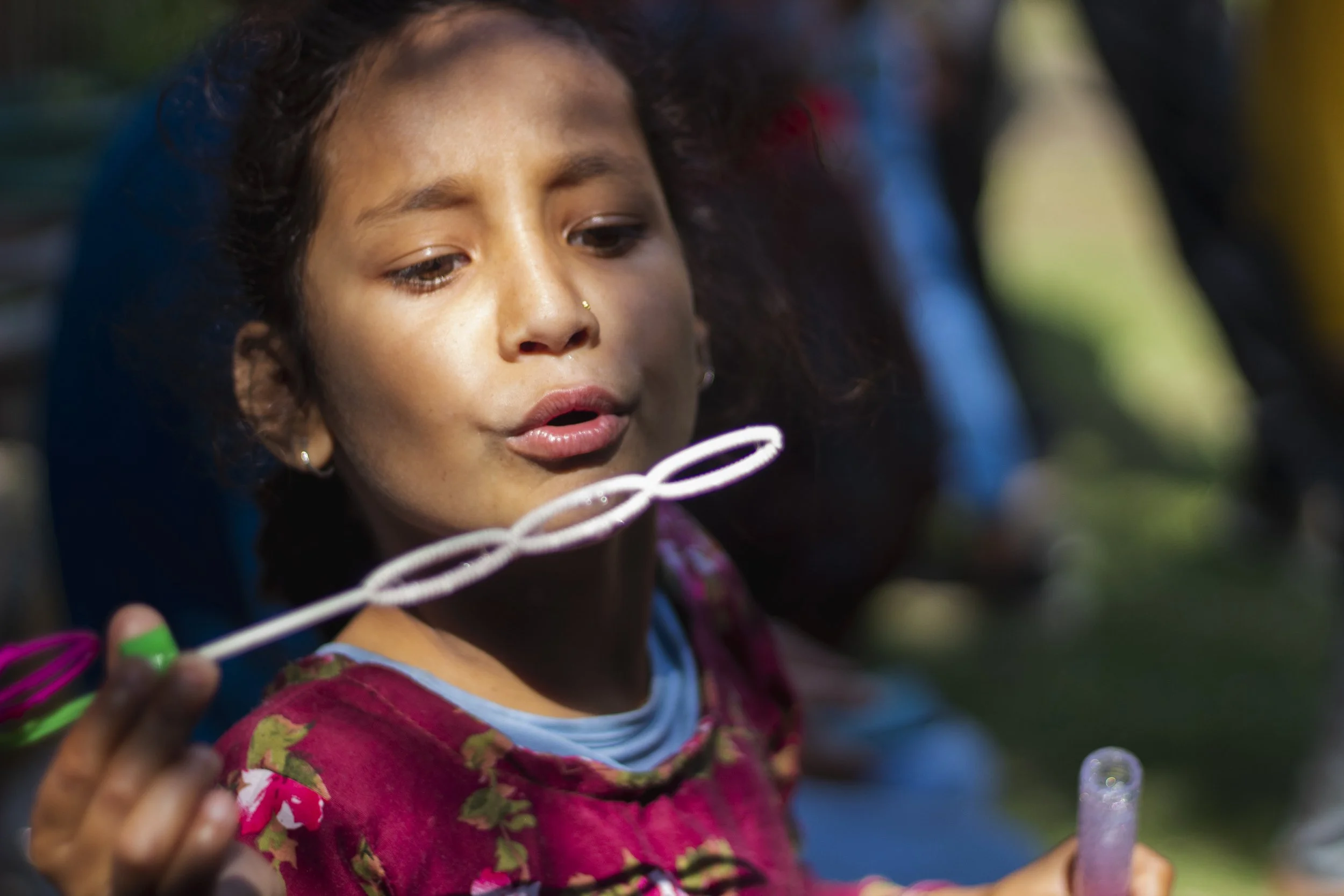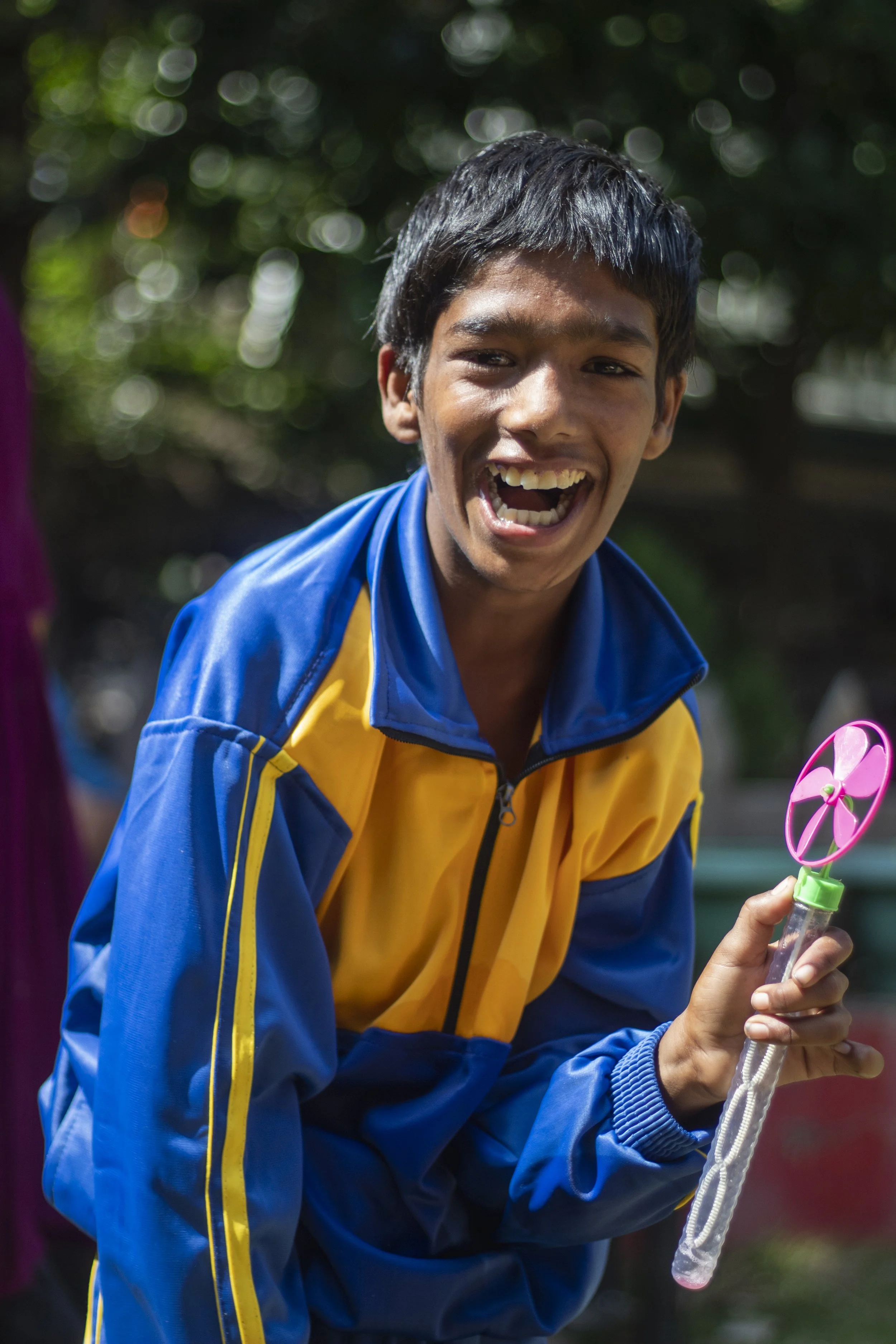Our vision
In terms of education, Samvedna’s goal is to have each child with a disability included in mainstream education. Early learning centres have been established for children (3 – 13 years) with disabilities to attend where their access to mainstream education is not immediately possible (due to level of disability or other barriers). The role of the centre is to prepare the child for admission into mainstream school and then to facilitate and support their enrolment and follow up their progress once in mainstream school. The early learning centre has access and support from special education teachers, speech therapist, occupational therapists, physiotherapists, ear nose and throat surgeon and an orthopaedic surgeon. The allied health professionals carry out an assessment of the child’s needs and develops individual learning and care plans, measuring their progress each three months. This progress is shared with the parents and care givers of the children with disabilities. If is determined through an assessment that a child needs medical care such as an eye test, ear nose and throat screening or an assistive device than plans are made for the child to undertake the scan or corrective surgery and assistance devices are provided where needed to the children. At the conclusion of meeting with parents and caregivers of children with disabilities it was decided that despite the families being on very low incomes and living in poverty, the families should take some ownership over the program. The parents and children with disabilities decided they would contribute 20 rupees to contribute to the early learning centre each month. As part of Samvedna, parents of children with disabilities involved in the project are given access to different activities such as counselling, motivational talks and one to one support to parents and caregivers addressing practical barriers they may be facing, involving their ideas and input in the types of interventions and therapies used in the project. There are 8 full time staff ( 1 - Project Manager, 1- Physiotherapist, 1- Documentation officer, 3 Special educators, 1 CBR worker and 1 office attendant ) 15 volunteers (5 with a disability) and 81 children currently involved in Samvedna. There are now 5 early learning centres across 70 villages, with each centre covering 10-15 villages. Prior to the Samvedna program commencing the program organisers called a meeting with the local DPOs and other community members and showed them the proposed project plan, taking the ideas and feedback of the disability community on board when implementing the program. Each quarter the program managers meet with the disability advocacy and wider community groups to share the programs learnings and outcomes. Samvedna collaborates with DPOs, local government, the area chief medical officer and the disability commissioner in the area, submitting monthly reports to them. The advocacy part of the program relates to the empowerment and training of people with disabilities through Disabled People Organisations (DPOs) about their rights and entitlements to access government schemes, pensions, certificates and benefits. Information and support is provided to facilitate such access. Such government recognition of disability facilities access to subsidies loans for starting income generation programs and loans for small businesses from the bank and social welfare department. The livelihood part of the program relates to facilitating access to government and NGO training, which gives a person with a disability a certificate and basic tools to start a livelihood initiative. For example, parents whose children are attending the early learning centre will be trained in making handicrafts and cards that can be sold through the program. The tailoring centres, part of the livelihood approach equips women with tailoring skills and it is a requirement of this program that the trainer either has a disability or is a parent or caregiver of a child with a disability. On completion of this program a person with a disability, recognised through having a disability certificate with at least 40% disability can apply for a government grant of between 20,000 – 50,000 rupees.
An additional component of the livelihood approach is the composing of Self Help Groups (SHGs) for PWD and parents or caregivers of a CHW. In groups of 6 – 8 people members are taught about finances and encouraged to save, with saving contributions pooled together and circulated to the member of the group who is need of money that month. The group members decide who to give the funds to and are connected to banks to open accounts. The SHGs are also used to run education forums, rally members around social issues and advocate for change where social action is required. The program also has an empowerment, community education component which seeks to raise awareness and sensitivity around the barriers that people with disability face in the community. This is done through community meetings, skits, role plays, events on significant days such as International day of People with Disability, posters and banners displaying the rights of people with disabilities, training to educators at schools on the UNCRPD, a special friend club (where a group of children from a mainstream school are educated around issues of disability and then told to go into their own communities and befriend children and their families who have a disability to decrease stigma around disability).



